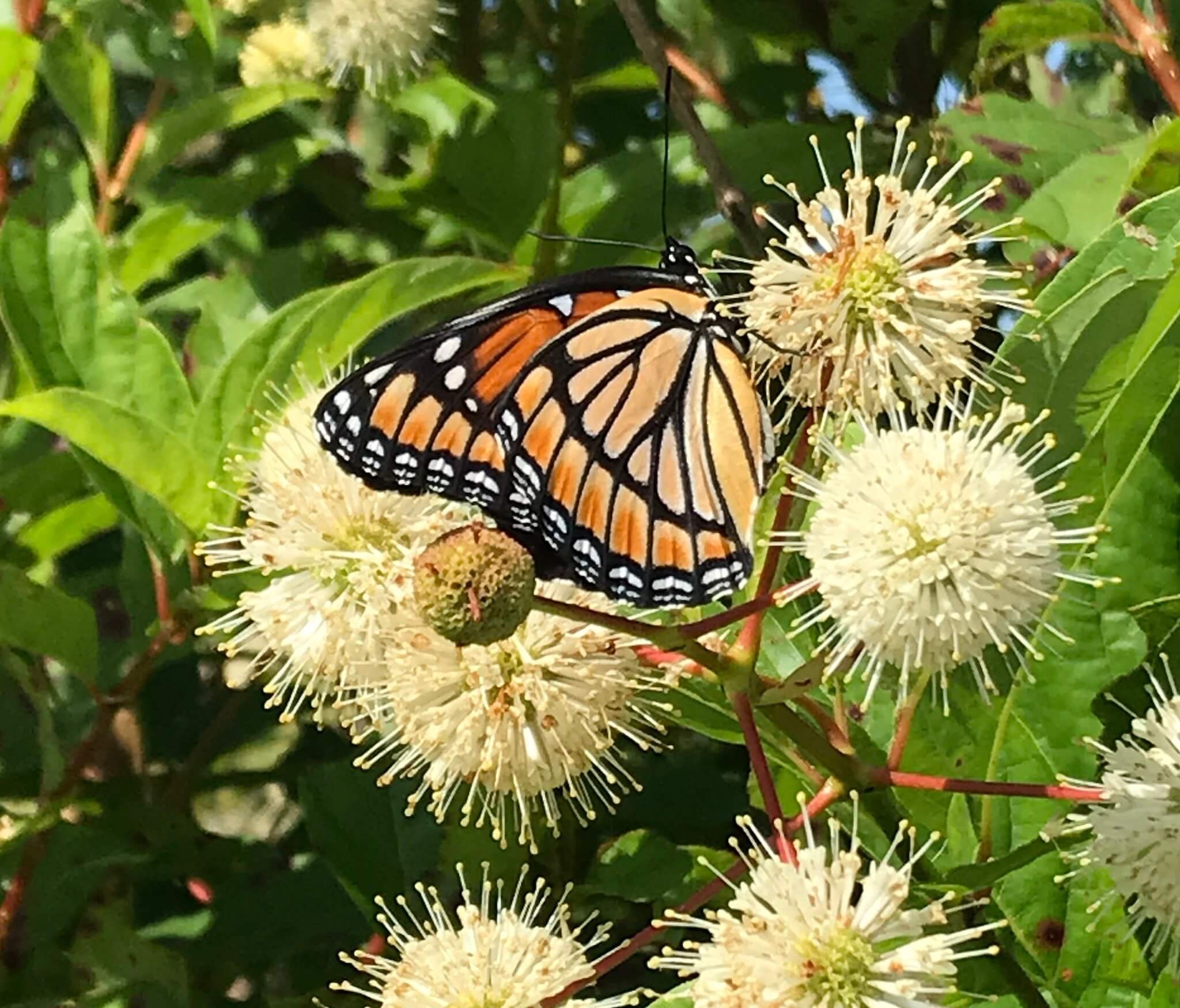Ninebark (Physocarpus opulifolius)
Ninebark flowers attract a wide variety of visiting bees and butterflies (illinioswildflower.info) and it is listed as a preferred pollinator plant by the Xerces Society (Xerces.org). Ninebark is the hot plant to 36 species of butterflies and moths in our area (nwf.org). The June-flowering plants will begin as pink buds, opening to white. The bark of old stems will peel in several shades of brown giving it its common name Ninebark. This plant provides excellent cover for birds with its numerous, arching stems. White-Tailed deer will likely browse on the foliage and branches of this shrub, and some upland gamebirds may eat the seeds.
Photo credit: Melissa Mcmasters (1) John Blair (2)
Ninebark flowers attract a wide variety of visiting bees and butterflies (illinioswildflower.info) and it is listed as a preferred pollinator plant by the Xerces Society (Xerces.org). Ninebark is the hot plant to 36 species of butterflies and moths in our area (nwf.org). The June-flowering plants will begin as pink buds, opening to white. The bark of old stems will peel in several shades of brown giving it its common name Ninebark. This plant provides excellent cover for birds with its numerous, arching stems. White-Tailed deer will likely browse on the foliage and branches of this shrub, and some upland gamebirds may eat the seeds.
Photo credit: Melissa Mcmasters (1) John Blair (2)
Ninebark flowers attract a wide variety of visiting bees and butterflies (illinioswildflower.info) and it is listed as a preferred pollinator plant by the Xerces Society (Xerces.org). Ninebark is the hot plant to 36 species of butterflies and moths in our area (nwf.org). The June-flowering plants will begin as pink buds, opening to white. The bark of old stems will peel in several shades of brown giving it its common name Ninebark. This plant provides excellent cover for birds with its numerous, arching stems. White-Tailed deer will likely browse on the foliage and branches of this shrub, and some upland gamebirds may eat the seeds.
Photo credit: Melissa Mcmasters (1) John Blair (2)
Life Cycle: Perennial
Sun Exposure: Full, Partial
Soil Moisture: Medium-wet, Medium, Medium-Dry
Height: 8 feet
Plant Spacing: 4-6 feet
Bloom Time: June-July
Bloom Color: White
Advantages: Caterpillar Favorite, Bird Favorite, Great landscaping plant
Host Plant: Cecropia and 35 other species of butterflies and moths use this as a caterpillar host plant in our area (https://www.nwf.org/NativePlantFinder/Plants)










